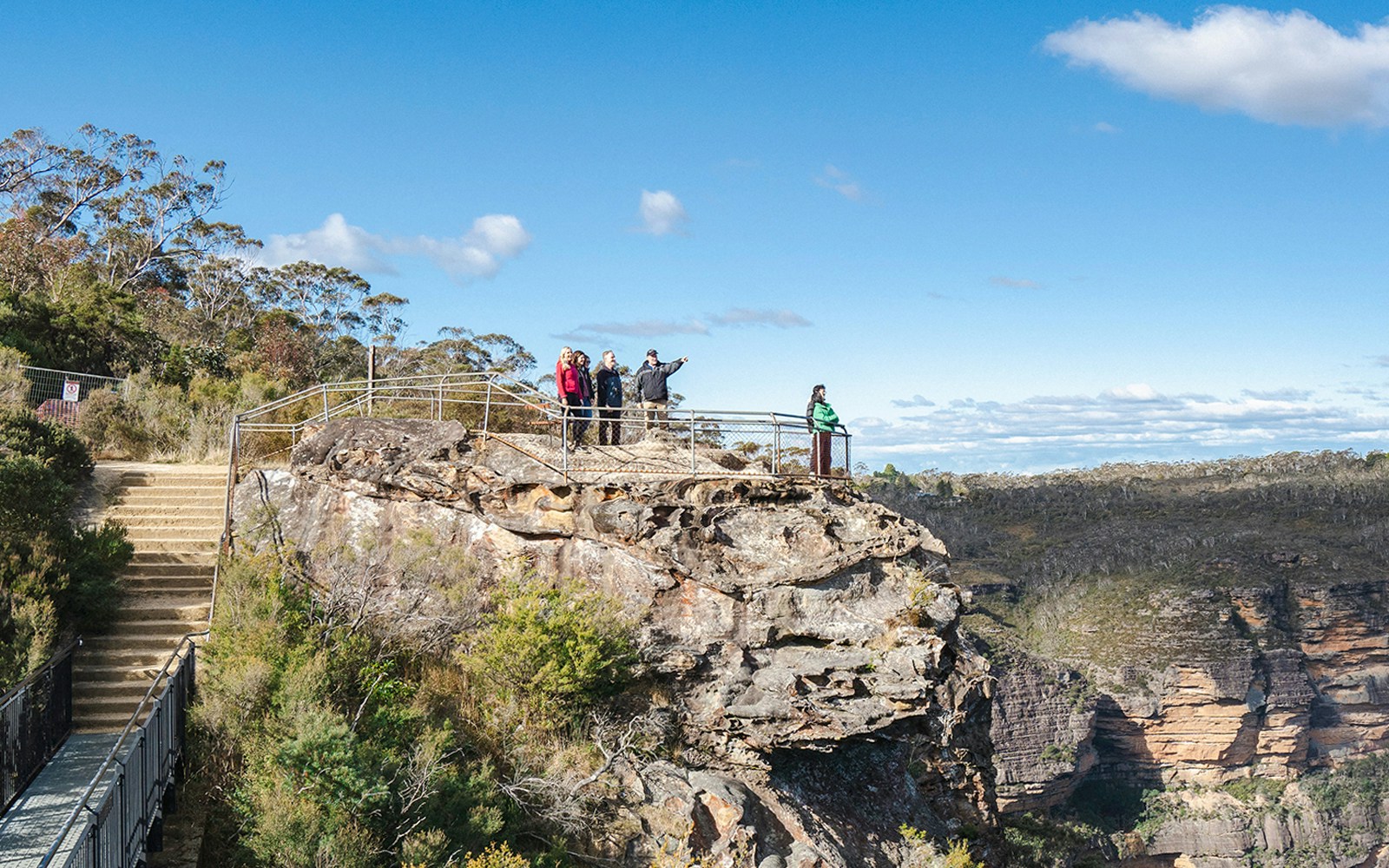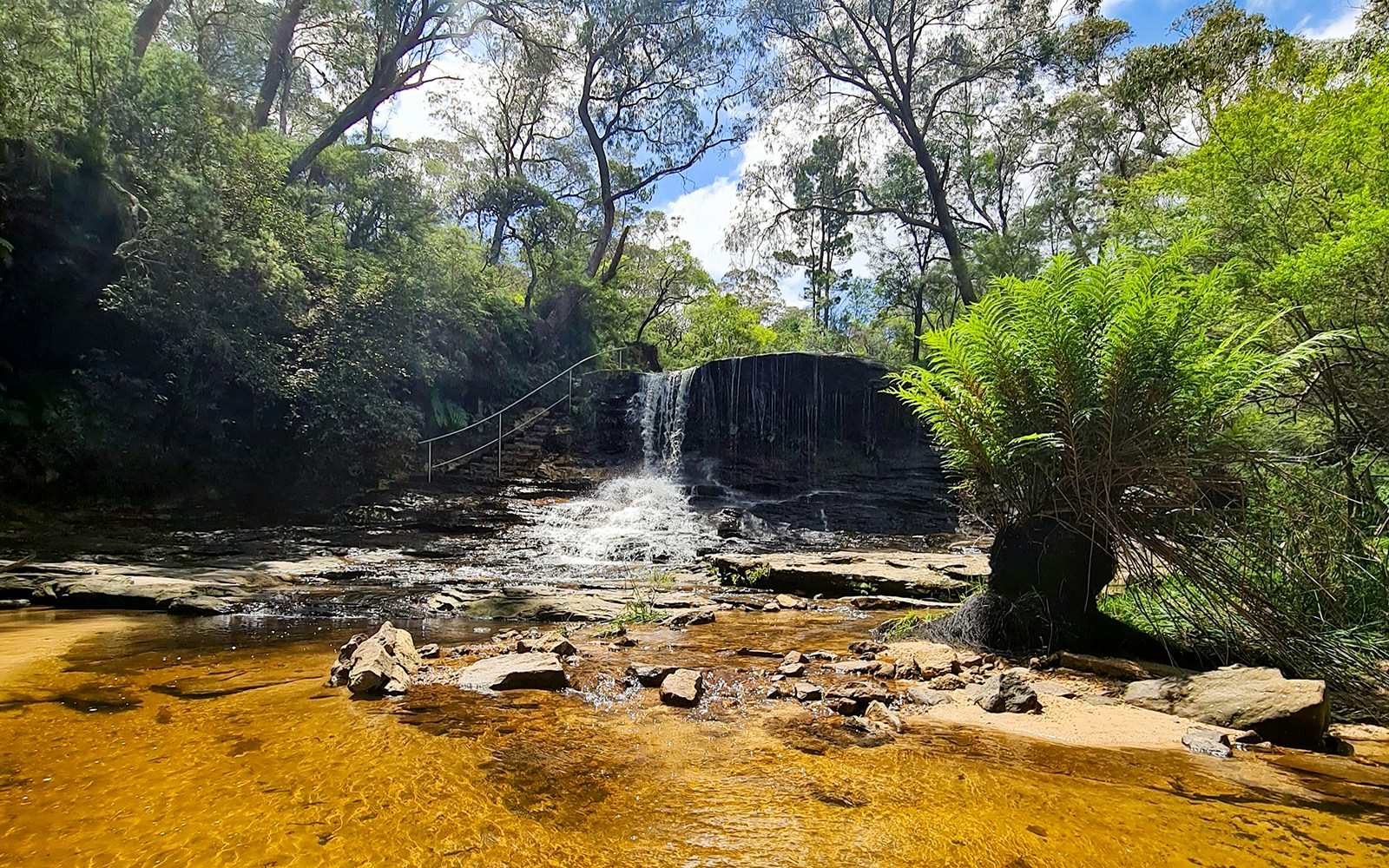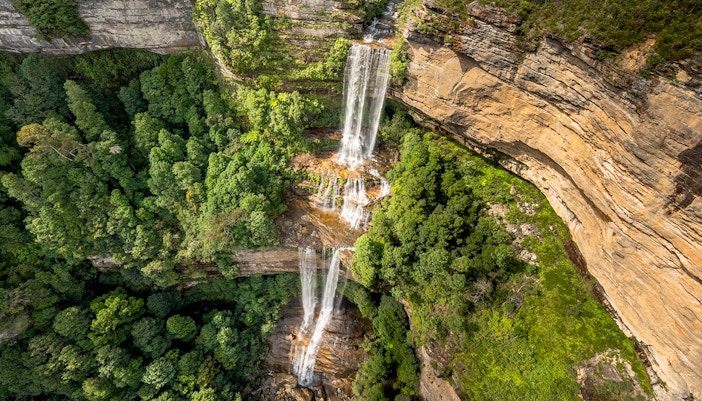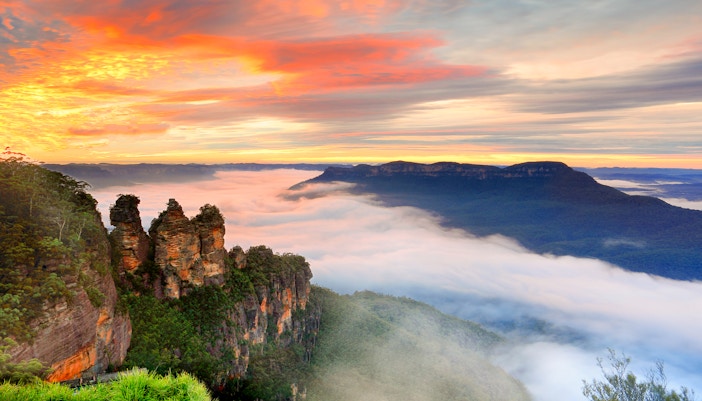Jamison Valley, Grose Valley and the Three Sisters offer classic viewpoints.
- Explorer Bus
- Sunset Tours
- Echo Point
- Katoomba Falls
- Wildlife
- Parramatta River Ferry
- Cahill's Lookout
- Wentworth Falls
- Three Sisters
- Lincoln’s Rock
- Blue Mountains National Park
- Villages
- SEA LIFE Sydney Aquarium Tickets
- Sydney Opera House Tours
- Scenic World Tickets
- Sydney Whale Watching Cruises
- Sydney Tower Eye Tickets
- Taronga Zoo Tickets
- Sydney Zoo Tickets
- WILD LIFE Sydney Zoo Tickets
- Featherdale Wildlife Park Tickets
- Madame Tussauds Tickets
- Big Bus Sydney Hop-on Hop-off Tours
- Skydive Sydney Tickets
- Australian National Maritime Museum Tickets
- Australian Reptile Park Tickets
- Hunter Valley Wine Tours
Guide to hiking at Blue Mountains
Why go hiking in the Blue Mountains?
Explore scenic cliffs and valleys
Beginner-friendly hiking trails at Blue Mountains
Beginner-level walks in the Blue Mountains require no prior experience and are akin to taking an easy stroll in a forest. These trails are usually paved, wheelchair accessible and kid-friendly.
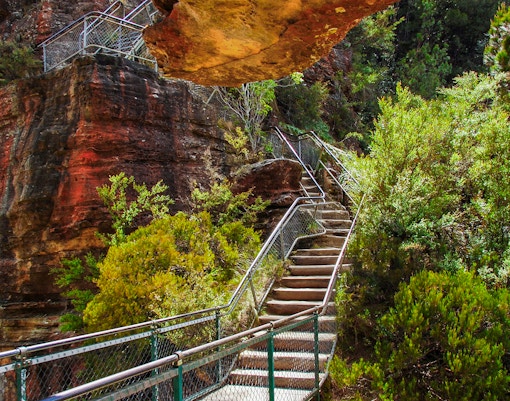
Three Sisters walk (Echo Point → Three Sisters)
- Distance: ~1 km return (Echo Point to the Sisters and back)
- Time: 25–45 mins
- Why go: Iconic views, paved path, and interpretive signs.
- Safety note: The Giant Stairway is a very steep descent of ~998 steps to the valley floor and is not a beginner option. Attempt it only if you’re fit and prepared.
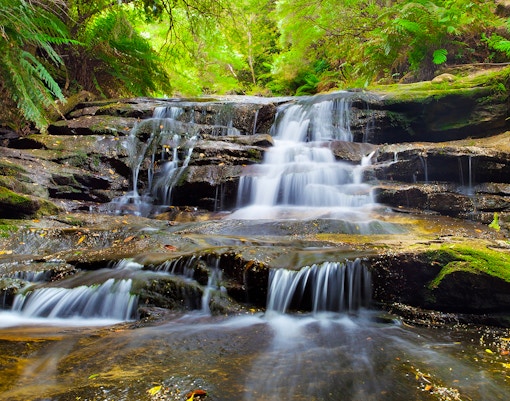
Leura Cascades walk
- Distance: ~0.6 km return (short loop to lookouts/cascades)
- Time: 20–45 mins
- Why go: Gentle rainforest and small falls, great for families.
- Status: Bottom section/adjacent access may be closed for works. Check NPWS alerts before visiting.
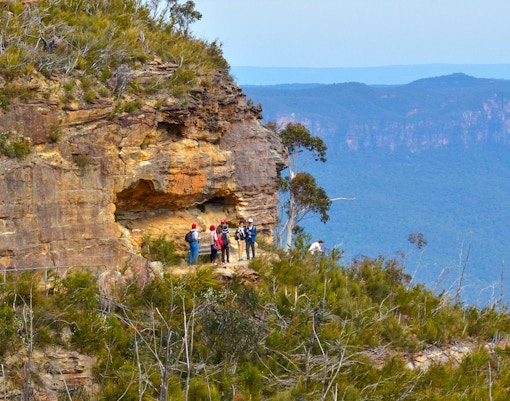
Prince Henry cliff walk
- Distance: 7 km one-way (can be done in sections)
- Time: 3–4 hours (one way if walked continuously)
- Why go: Continuous cliff-top path with many lookouts over Jamison Valley; do it in sections if short on time.
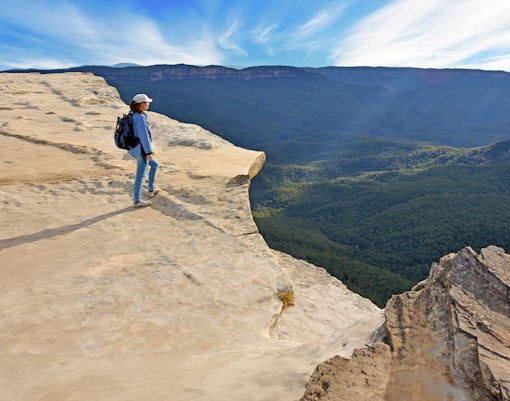
Fairfax Heritage walking track
- Distance: ~1.8 km one-way (≈3.6 km return if you go out and back)
- Time: ~30–45 mins one way; allow about 60-75 mins return depending on pace and stops.
- Why go: It’s one of the very few wheelchair- and pram-accessible bushwalks in the park, making it perfect for families and travelers of all abilities.
Moderate level hiking trails at Blue Mountains
Moderate bushwalks require a certain level of stamina and fitness. You should be comfortable walking for at least 2 hours on uneven and rugged terrain, as these trails are not always paved.
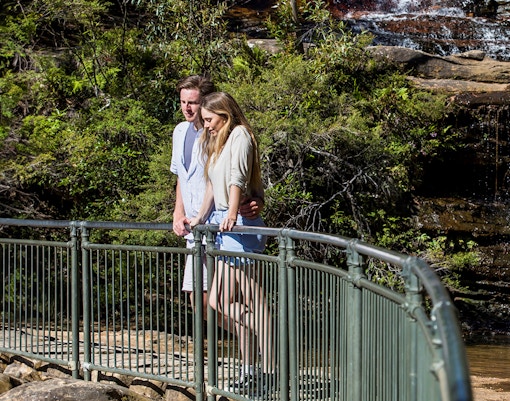
Wentworth Falls track
- Distance: depends on route; the main lookout approaches are short, but valley circuits vary.
- Time: allow 1–3 hours, depending on the chosen loop.
- Why go: Waterfall views, cliff edges, and Valley lookouts.
- Note: Some Wentworth Falls track variants and boardwalks have been subject to repairs/closures; check NPWS.
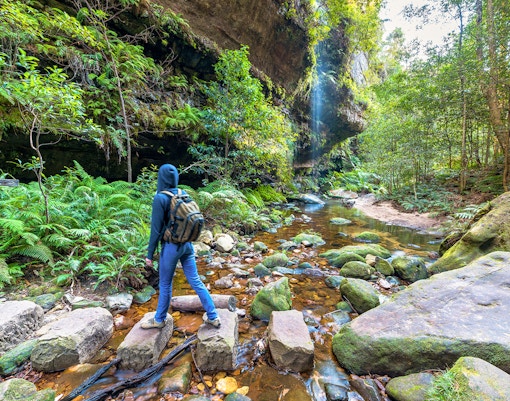
Grand Canyon walk (Blackheath)
- Distance: ~6.3 km loop
- Time: 3–4 hours
- Why go: A world-class gorge walk that drops into rainforest, past waterfalls, and returns along the rim, a must for moderate bushwalkers.
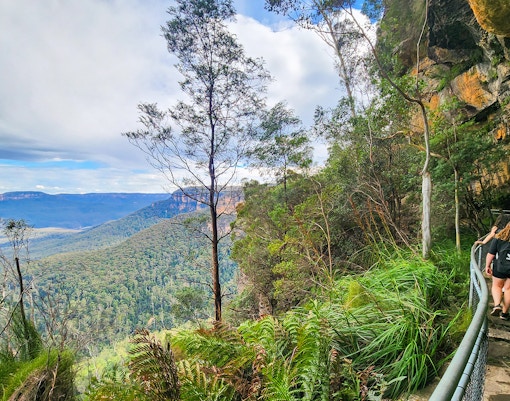
Ruined Castle track
- Distance: 6.6 km return (NPWS official figure for the Ruined Castle walk)
- Time: 4–5 hours (allow more if combining with Mount Solitary)
- Why go: Historic mining remains, rainforest sections, and panoramic summit views.
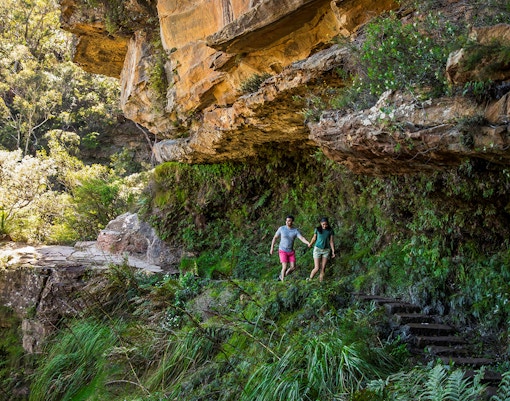
Overcliff Undercliff (Katoomba area)
- Distance: ~4.5 km return (varies by entry)
- Time: ~1.5–2.5 hours
- Why go: Cliffline lookouts and birdwatching; can be muddy after rain (sturdy boots advised).
Advanced hiking trails at Blue Mountains
Advanced bushwalks can range from a few hours to a few days. Apart from good stamina and fitness, you’ll also need to have some hiking experience to venture these trails. It is essential to be familiar with camping skills such as map navigation and tent set up.
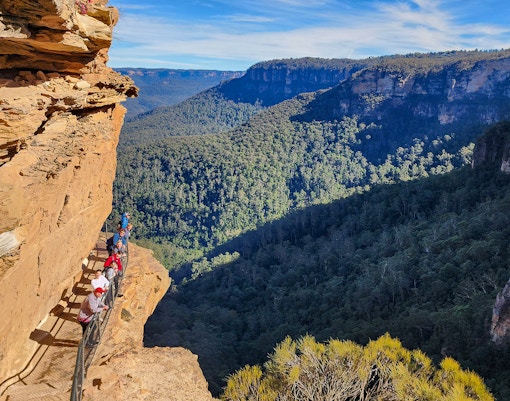
Rodriguez Pass (via Valley of the Waters, Wentworth Falls)
- Distance: ~12 km loop (depending on start point)
- Time: 4–5 hours (Grade 5)
- Why go: A challenging descent into the Valley of the Waters, weaving past waterfalls like Sylvia, Empress, and Vera. The trail is rugged and steep but delivers close-up encounters with cascades and deep rainforest, far from the clifftop crowds.
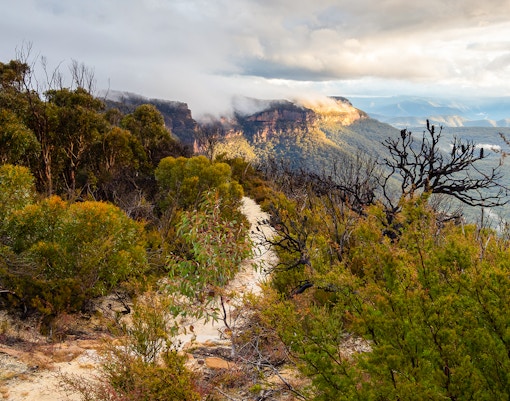
Mount Solitary Walking Track
- Distance: 34 km loop (multi-day)
- Time: ~3 days (NPWS Grade 5)
- Why go: This is the true wilderness challenge of the Blue Mountains. Expect steep ascents, river crossings, and remote campsites before reaching the open summit of Mount Solitary. The reward? Unbroken 360° views across the Jamison and Kedumba Valleys, with barely another hiker in sight. A rite of passage for seasoned bushwalkers.
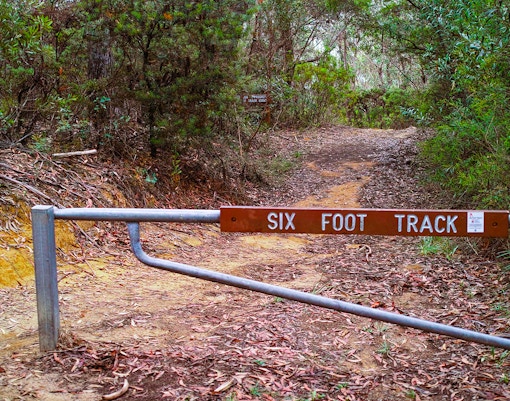
Six Foot Track (Katoomba → Jenolan Caves)
- Distance: 42 km one way
- Time: ~3 days (Grade 4/5)
- Why go: Follow a historic 1884 bridle trail linking Katoomba to Jenolan Caves. Over three days, you’ll cross suspension bridges, rivers, and open farmland before finishing at the limestone cave system. It’s one of NSW’s classic long-distance walks, a blend of history, endurance, and scenery.
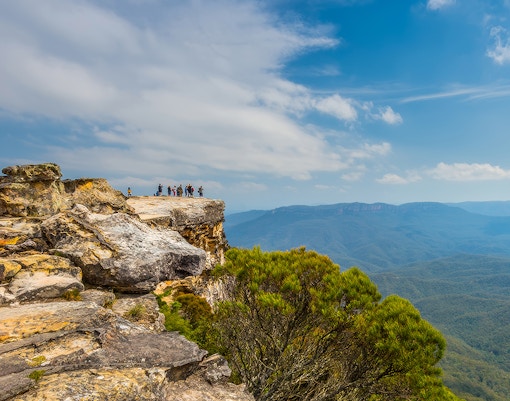
Grand Cliff Top Walk (Wentworth Falls → Katoomba)
- Distance: ~19 km full length (can be done in sections)
- Time: 1–2 days, or shorter day walks per section
- Why go: Newly opened in 2024, this is the Blue Mountains’ signature long day walk. It strings together cliff-edge lookouts, rainforest gullies, and village entry points in one continuous line. Perfect if you want a multi-village, multi-view experience without going fully off-grid.
Know before you go hiking at Blue Mountains
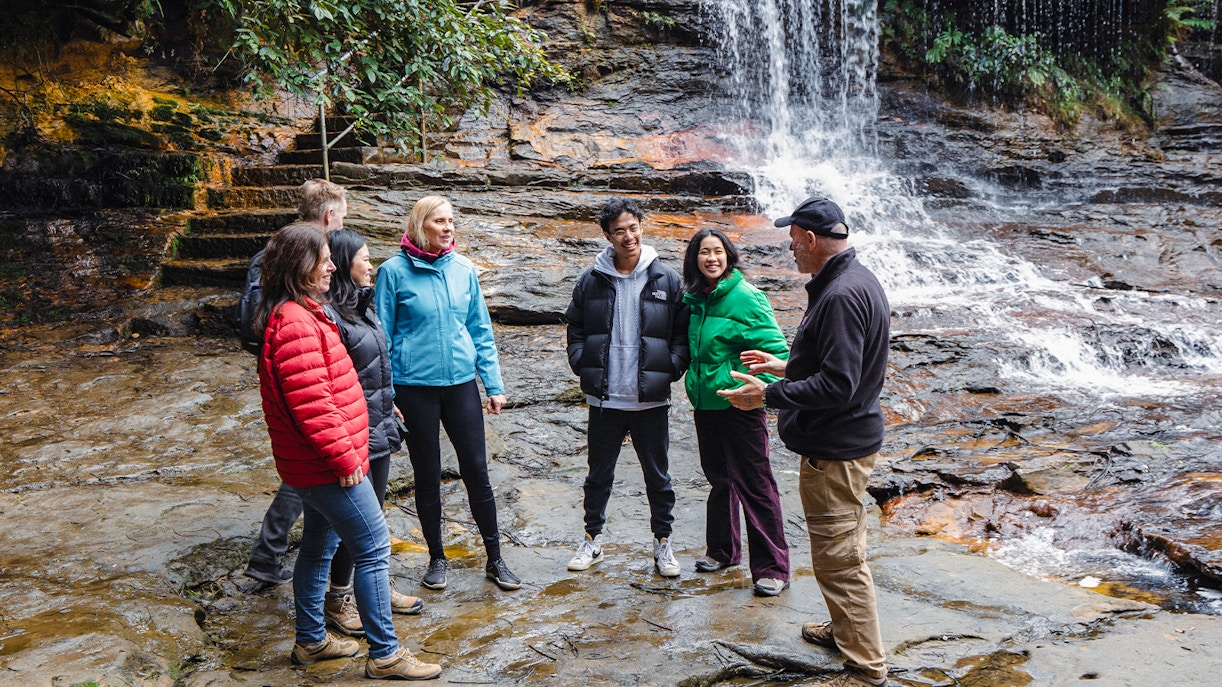
Several Blue Mountains tours include 2 to 3 bushwalks in their itineraries, so a curated tour is a convenient choice for beginners and expert hikers alike.
- Spot various native life forms: The guides are well-versed in the local environment and can point out unique plants and animals that you may miss on your own.
- Uncover rich history and local tales: Get insights into the historical significance of the region and listen to local tales of the Blue Mountains’ Aboriginal inhabitants.
- Discover hidden gems: Your guide will also know lesser-known trails that you can explore in peace, away from large crowds.
- Safety assured: Your guide will take you through safe paths and also share tips with you for emergencies. They also come prepared with the right equipment, in case you may have missed anything.
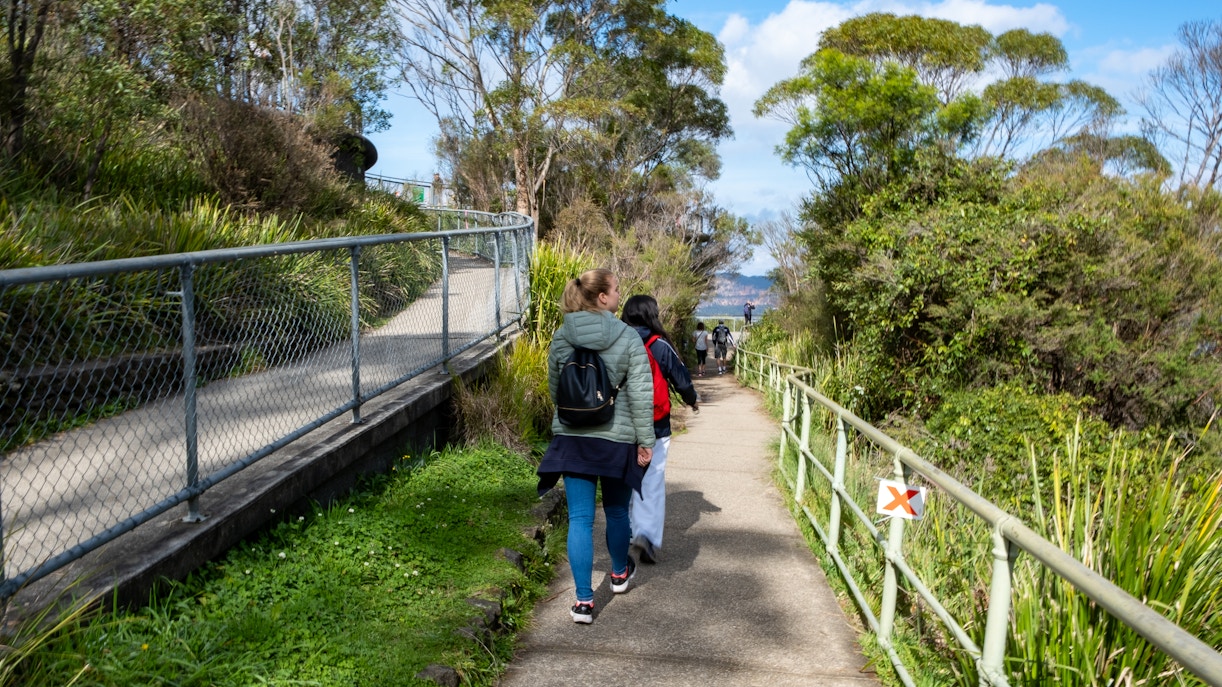
- National Pass: Partially closed between Valley of the Waters and Slacks Stairs due to rockfall/landslips. Some sections of the National Pass remain unsafe; do not attempt closed sections. Always consult NPWS alerts.
- Leura Cascades / Honeymoon Bridge / Federal Pass / parts of Lindeman Pass / Six Foot Track / other sections have had temporary or partial closures for repair or rockfall risk; closures change frequently after heavy rain or remediation work. Check the NPWS local alerts feed before publishing trip itineraries.
Authoritative live source: NSW National Parks alerts.
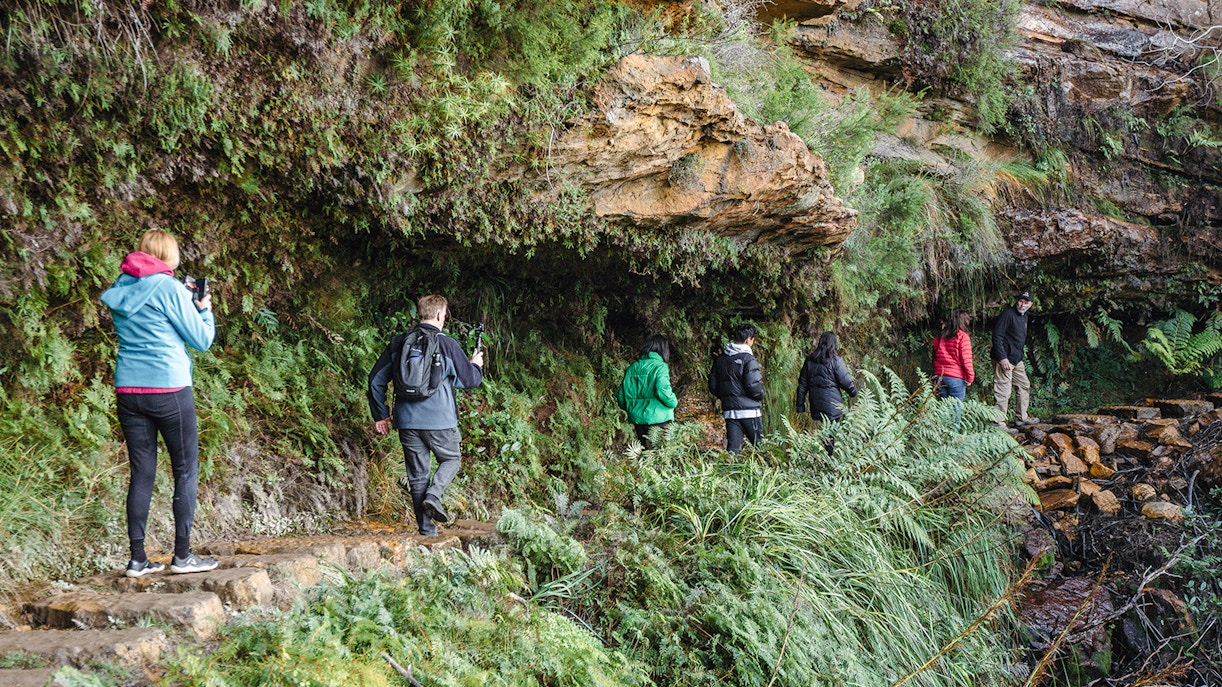
- Stay on marked trails: Avoid veering off the marked paths for your safety and the safety of the environment. Some trails have steep drop-offs, so it’s important to stay within safe areas.
- Mobile emergency: Dial Triple Zero (000) in an emergency (this requires mobile reception). Also, make sure to download the Emergency Plus app before you head out on your hike, as it aids emergency services in locating you by triangulating your smartphone's GPS.
- Group walks: Head out in groups of 3 or more. This way, in an emergency, one person can wait with the injured, while the other gets help.
- Weather forecasts: Check weather forecasts and park alerts before embarking on your trail. Weather conditions tend to change rapidly in the region, so have rain gear handy and wear sturdy shoes.
- Closed tracks: Never bypass closures; they’re usually for rockfall or landslide risk and can be life-threatening. Always link out to NPWS alerts on the page.

- Wear appropriate gear: Sturdy, comfortable hiking boots are essential, especially for moderate and difficult trails. Dress in layers and bring sun protection (hat and sunscreen). Opt for long, loose clothing to prevent insect bites, and make sure to spray your clothing and exposed skin with an insect repellent.
- Trip intention: for moderate/advanced hikes, complete a trip intention form and tell someone your route and ETA. NPWS encourages this for rescues.
- Bring: 2 L+ water per person (more for hot/exposed routes), a basic first aid kit, a headlamp, a whistle, and a paper map. Mobile coverage is unreliable in the valleys.
- Check for track closures: Some tracks may be closed for maintenance, fire hazards, or bad weather. Always check the NSW National Parks and Wildlife Service website or the visitor center at Blackheath before heading out.
- Pets: Pets and domestic animals (other than certified assistance animals) are not permitted on the trails.
- Smoking: The National Parks are no-smoking zones.
- Leave no trace: Pack out all trash and follow ‘stick to the track’ rules to protect fragile vegetation.
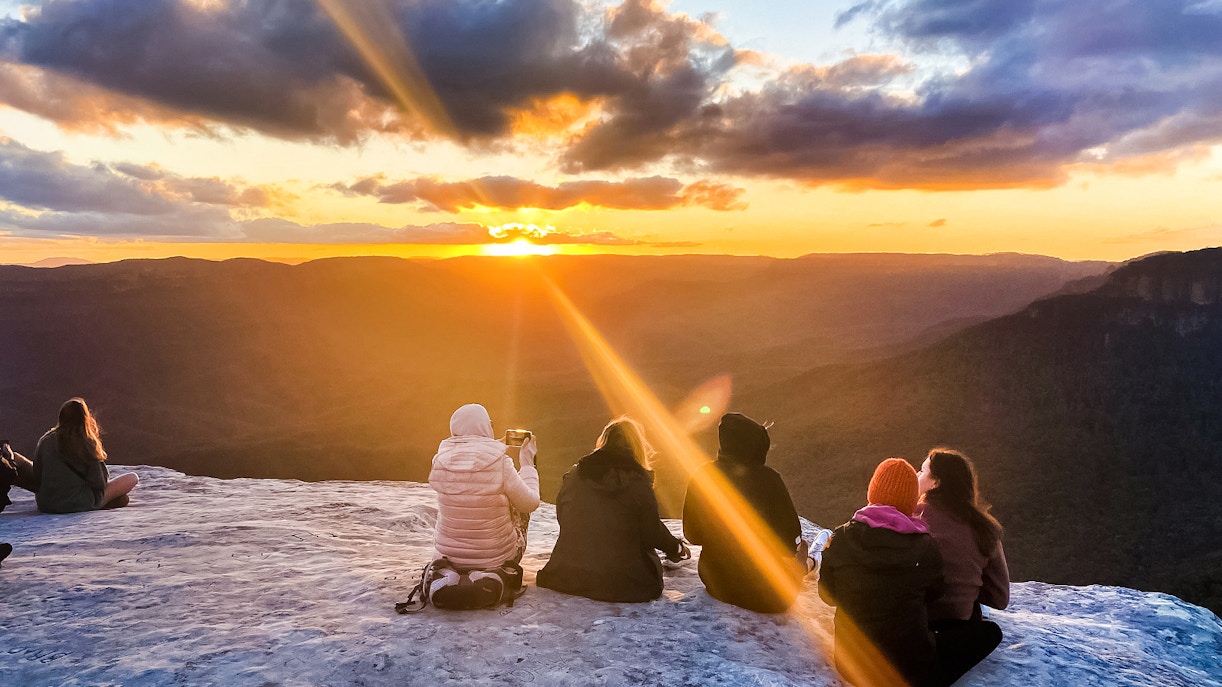
- Start early: Many trails can get busy, especially on weekends. Starting early allows you to avoid the crowds and enjoy the peaceful surroundings.
- Inform someone of your plans: If you’re doing a longer or more challenging hike, let someone know your plans and expected return time. It’s a good safety precaution in case of emergencies.
- Download offline maps: Mobile phone coverage can be patchy in some parts of the Blue Mountains. Download an offline map or carry a physical map if you're venturing into remote areas.
- Take back your trash: Help protect the natural environment by taking your trash with you and respecting the wildlife and flora.
Frequently asked questions about Blue Mountains hiking
The Blue Mountains are great to visit year-round, but spring (September to November) and autumn (March to May) are ideal because of mild weather and vibrant scenery.
The Three Sisters Walk, Wentworth Falls Track, Grand Canyon Walk and National Pass are some of the more popular bushwalks in the region.
Absolutely, there are numerous family-friendly bushwalks, such as the Three Sisters Walk and the Leura Cascades Track. These are short, well-paved and easy enough for young children to explore.
Common risks include unexpected steep cliffs, dehydration and sudden weather changes. Also, if you’re doubtful of being able to complete the long trails, it’s better to avoid it than get stuck mid-way.
Yes, the Three Sisters Trail, The Prince Henry Cliff Walk, the Fairfax Heritage Track are all well-paved and easily accessible to strollers and wheelchairs.
The Blue Mountains are home to a range of native wildlife. Common sightings include kangaroos, wallabies, lyrebirds, kookaburras, cockatoos, and echidnas.

